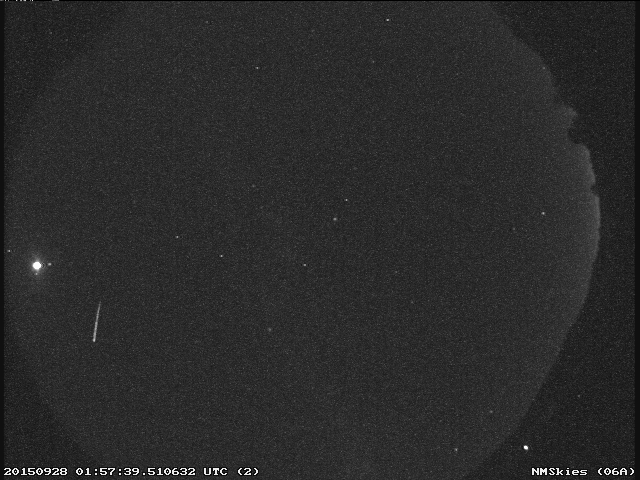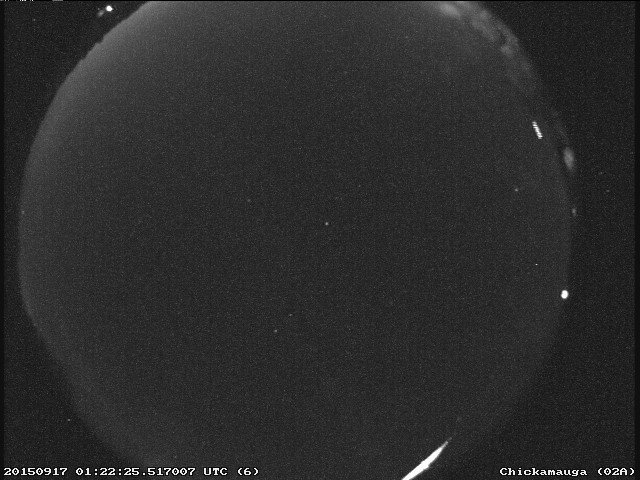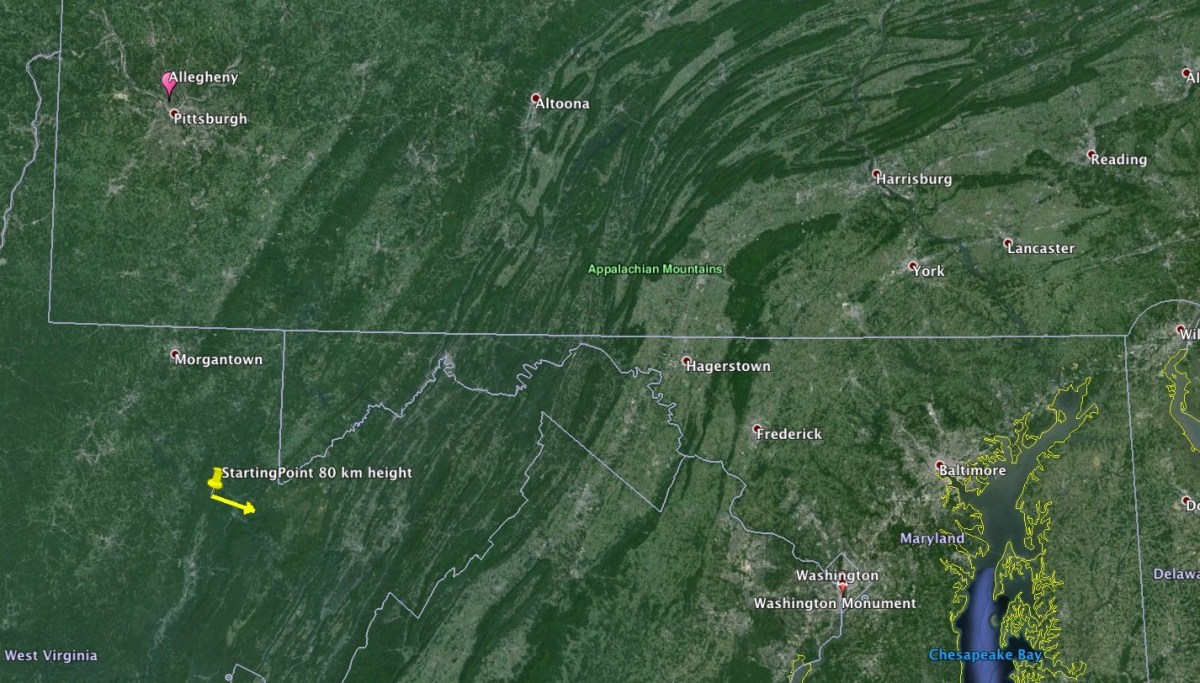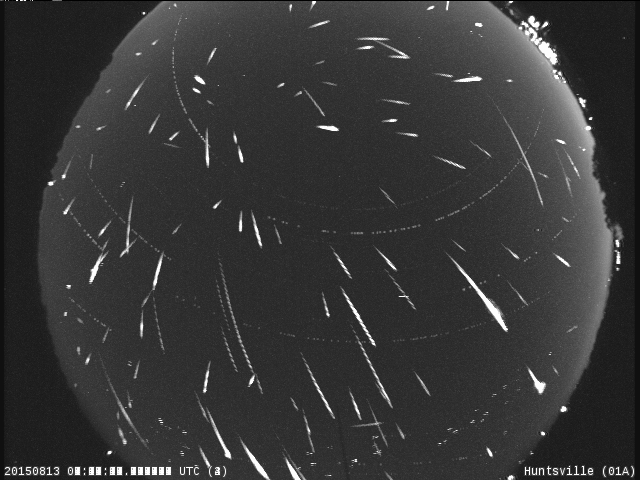A meteor flashes by the Moon at the beginning of the September 27, total lunar eclipse. From the NASA meteor camera in Mayhill, New Mexico.
NASA Marshall Team Observing and Taking Questions about Upcoming Lunar Eclipse
In the Americas on Sunday night, Sept. 27, we will be treated to a lunar eclipse with its beautiful orange and red colors, a prelude to the fall color of leaves in Earth’s Northern Hemisphere. This eclipse will straddle midnight on Sept. 27, depending on where you live. If observing close to the Greenwich Meridian in the U.K., the eclipse begins just after midnight, in the morning of Sept. 28 at 00:11 Universal Time (UT). But Sept. 28, 00:11 UT, translates to Sept. 27, 8:11 p.m. EDT and 7:11 p.m. CDT.
All of the Americas are well placed to see this eclipse. The table below lists eclipse timing details. If you have questions about this eclipse, you will have an opportunity to ask experts at NASA’s Marshall Space Flight Center in Huntsville, Alabama!
About Lunar Eclipses
Throughout human culture, lunar eclipses have been viewed with awe and sometimes fear. Today we know that a total lunar eclipse happens when the full moon passes through the darkest part of Earth’s shadow, the umbra. Near the beginning and ending of an eclipse, the moon moves through a less dark portion of the shadow, called the penumbra, which is hardly visible. The partial phase begins (ends) when the moon enters (leaves) the umbra. When the moon has completely passed into Earth’s shadow, the eclipse is in its total phase.
The length of the eclipse is dependent on the position of the moon along an Earth-sun line. The longest eclipses occur when the moon is directly in line with Earth and sun. The shortest eclipses are when the moon is either above or below that line. The moon does not make its own light; it only reflects the light it receives from the sun. During a lunar eclipse, the moon appears less and less bright as sunlight is blocked by Earth. As totality approaches, more and more of the sunlight reaching the moon does so indirectly; it is refracted around the “edges”of Earth, through our atmosphere.
Because the light is going through the Earth’s atmosphere, almost all colors except red are “filtered” out and the eclipsed moon appears reddish or dark brown. The filtering is done by particulates in the atmosphere; when there have been a lot of fires and/or volcanic eruptions, lunar eclipses will be darker and redder. This eerie but harmless effect has earned the tongue-in-cheek nickname “blood moon.”
Supermoon – No, not SuperMan, SuperMoon
The moon orbits Earth in an ellipse that is almost circular (as is the orbit of most planets around the sun), but because the orbit is elliptical, sometimes the moon is closest to Earth (perigee) and sometimes farthest from Earth (apogee). The position of the moon for the Sept. 27/28 eclipse is very close to perigee, so it will appear a bit larger in the sky than a month from now.
You could measure this, with simple items from around the house. Try using a coin (or button or marble) at arm’s length to block the full moon, do this at a particular time, then try it again for the next several months at full moon, at the same time. If the coin (or other item) covers the moon on Sept. 27 (2015), it will more than cover the moon at later times, proving that the moon is smaller and thus farther away. Also, because the moon is at perigee (close approach to Earth) a supermoon will cause slightly larger tidal effects.
How to View and Ask Questions
NASA’s Marshall Space Flight Center will offer a live Ustream view of the lunar eclipse on the Sept. 27, the night of the event, via the Marshall Center Ustream feed. The live feed is an alternative for observers caught with bad weather or light-polluted night skies.
Mitzi Adams, a solar physicist at Marshall, will talk about what viewers are seeing on screen and answering questions from Twitter. To ask a question, use the hashtag: “AskNASA.”
Meteor Over Alabama Brighter than Crescent Moon
On September 16, at 8:22:25 PM local time, NASA meteor cameras in north Georgia and western North Carolina detected a bright fireball over middle Alabama. First seen at an altitude of 45 miles above Paul M. Grist State Park, near Selma, Alabama, the 6 inch diameter chunk of asteroid moved east at a speed of 38,000 miles per hour before burning up some 28 miles above northern Elmore County. At its most intense, the meteor was even brighter than a crescent Moon.
https://www.youtube.com/watch?v=https://www.youtube.com/watch?v=C0RWxMfBuLM[/embedyt]
West Virginia Fireball
https://www.youtube.com/watch?v=https://www.youtube.com/watch?v=O6U5ecd_z8c[/embedyt]
A bright meteor occurred over West Virginia last night at 9:27 EDT. It was seen across Ohio, Pennsylvania, Virginia, North Carolina, and Maryland! NASA’s Pennsylvania and Ohio all sky cameras caught it near the edge of the field-of-view, but what also saw it was an EarthCam located on the Washington Monument!
Perseids in the Skies over Marshall Space Flight Center
Perseids Are Already Appearing in the Huntsville Sky
This composite image shows the meteors detected by the NASA All Sky Fireball Network station here in Huntsville, Alabama this morning. The majority of the meteors are Perseids, but a handful belong to the Northern Delta Aquariid, Southern Delta Aquariid, Alpha Capricornid, and Southern Iota Aquariid meteor showers that are also active.
This Perseid meteor was observed by the NASA Wide-field Meteor Camera Network in the skies over Huntsville, Alabama on the morning of August 12.
Perseid Fireball Over New Mexico
Meteor Moment: What is the All-Sky Camera Network?
Dr. Bill Cooke, of NASA’s Meteroid Environment Office — located at NASA’s Marshall Space Flight Center in Huntsville, Alabama — explains what the All-Sky Camera Network is and how it’s used to track meteors or fireballs.
Meteor Moment: How to Watch the Perseid Meteor Shower
Rhiannon Blaauw, of NASA’s Meteoroid Environment Office — located at NASA’s Marshall Space Flight Center in Huntsville, Alabama — shares some tips and strategies to best view a meteor shower.
















